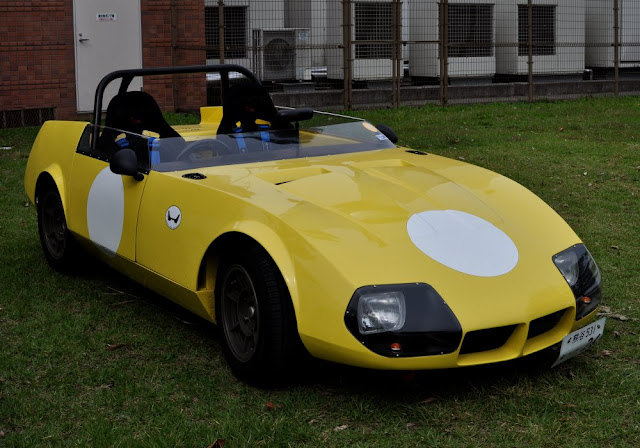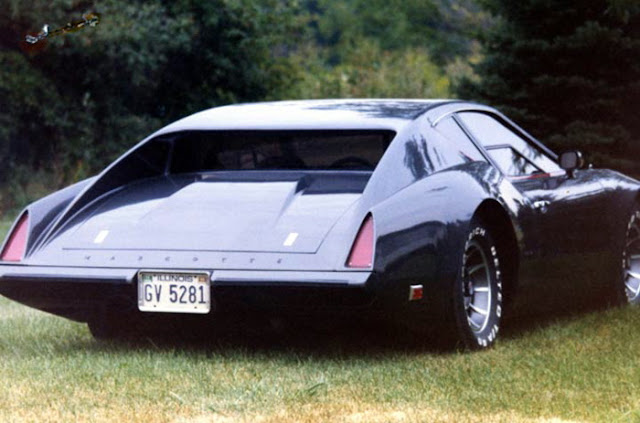In the mid 1960's, Honda introduced a light sporty roadster with a motorcycle derived engine called the S800. Per usual, with early Hondas, the S800 was a beautifully engineered little gem of a car. It was widely lauded and found fans among many of Japan's enthusiasts and club racers, but could it be improved?
A famous Japanese industrial designer, Motoki Hama, apparently thought so. In 1967 his company, Hama Studios, introduced the "Coniglio". The name translates to "hare" or "rabbit" in Italian. Its aerodynamic shape and limited weight gave the car increased performance and economy. It was initially offered as a fiberglass bodied coupe and sold in kit form.
 |
| Motoki Hama and the Coniglio Coupe |
The Coniglio was marketed to the public as a more practical, everyday sports car. At the time the kit cost the equivalent of roughly $3515, plus the cost of the donor car. It is not clear how many Coniglios were sold between 1967 and 1970, but a handful examples of the road going version survive today.
However, the more well known version of the Coniglio is likely the competition version developed by Racing Quarterly Equipment (RQE). The Honda S800 is a perfect base for developing a race car. Like the Toyota Sports 800, it competed in the Group 7 GT-I Class.
 |
| the Coniglio in competition form |
RQE commissioned a roadster version of the body from Hama and worked its own magic on the Honda donor chassis and drivetrain. Engineers involved in the development of Mazda's Le Mans cars also participated in the racer's conception.
The chain-driven architecture was kept intact while the engine was converted to a larger water-cooled setup. The motors on offer were bored between 850cc and 1000cc. This pushed the high revving motor up between 90-110 bhp and a top speed of 110mph, at its 10,000 rpm redline. The stock Honda's 791 cc straight-4 engine, produced 70 bhp (52 kW) at 8000 rpm, for comparison.
 |
| the Coniglio with its RQE tuned Honda engine |
This combined with a total weight of 550 kg, meant its performance was significantly improved over the Coniglio's donor Honda. A dozen copies were reportedly supplied to private racing stables in the late 1960s. One of these cars finished 1st in its class and 12th overal at the 1969 Japanese Grand Prix.
Apparently Hama Studio is still in business and as recently as 2004 a new example was made and subsequently campaigned in vintage racing throughout Japan. Sources indicate it can still be purchased today, though this author was unable to verify that.
 |
| the Coniglio by RQE |
Regardless, the cars both had a clean and forward looking design that has aged well. It remains as an intriguing entry in the lore of Japanese kit cars.

























Comments
Post a Comment